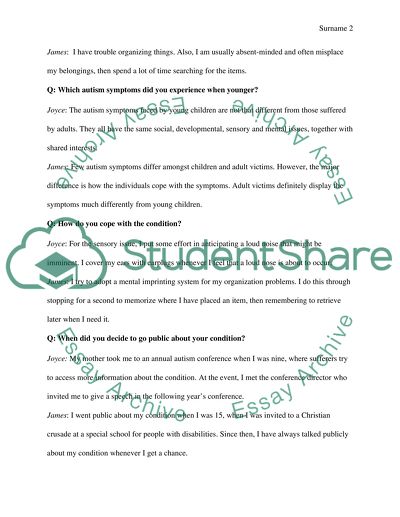Cite this document
(“Autism Assignment Example | Topics and Well Written Essays - 1750 words”, n.d.)
Retrieved from https://studentshare.org/psychology/1594027-autism
Retrieved from https://studentshare.org/psychology/1594027-autism
(Autism Assignment Example | Topics and Well Written Essays - 1750 Words)
https://studentshare.org/psychology/1594027-autism.
https://studentshare.org/psychology/1594027-autism.
“Autism Assignment Example | Topics and Well Written Essays - 1750 Words”, n.d. https://studentshare.org/psychology/1594027-autism.


